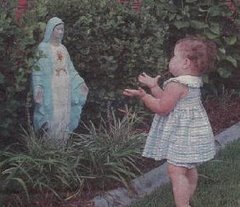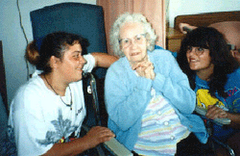 A few days ago I drove west and had a delightful lunch with Colleen Drippe', the editor of Hereditas Magazine and the author of a new children's book that reminds me of one of the Hardy Boys series. In addition to authoring a previous set of children's books, Colleen writes science-fiction (see two of her stories in the new INFINITE SPACE, INFINITE GOD sci-fi anthology mentioned in a previous post). She is also the author of GODCOUNTRY, an imaginative Catholic sci-fi novel that I'm currently reading. Colleen has over 200 published works to her credit, including quite a few articles on home-schooling. I asked Colleen several questions about her new book, and her answers appear below.
A few days ago I drove west and had a delightful lunch with Colleen Drippe', the editor of Hereditas Magazine and the author of a new children's book that reminds me of one of the Hardy Boys series. In addition to authoring a previous set of children's books, Colleen writes science-fiction (see two of her stories in the new INFINITE SPACE, INFINITE GOD sci-fi anthology mentioned in a previous post). She is also the author of GODCOUNTRY, an imaginative Catholic sci-fi novel that I'm currently reading. Colleen has over 200 published works to her credit, including quite a few articles on home-schooling. I asked Colleen several questions about her new book, and her answers appear below.What was your purpose in writing MYSTERY AT MINER’S CREEK?
You asked a big question there. I have written a mystery/suspense novel for young readers, but the book is more than that. I have provided an alternative, however small, to the corpus of corrupting and enervating writing so often presented to modern children. This is a Catholic book. While it is recreational reading, MYSTERY AT MINER’S CREEK is also a teaching book – not explicitly (or boringly) but in its very story line and in its assumptions. And this book is part of my campaign (shared by an increasing number of other Catholic writers) to retake the field of fiction writing for the Faith.
How are you qualified to write this book?
As the mother of four grown children (taught at home for most of their school years) I write what I know. In recent years, I have also been a teacher in a Catholic school and have come to know a good many well-brought up Catholic children. I write what I see, remember, imagine, and would like to see.
Is MYSTERY AT MINER’S CREEK for a particular age level? For boys? For girls?
I have aimed this book at the fifth grade through maybe ninth or higher. The main characters are boys – but after all, girls like a good adventure story too. They’ve got brothers, haven’t they? I think this will appeal to homeschoolers but also to those in school. My earlier books did.
What is the framework of the story? The storyline?
This is the story of Mr. and Mrs. Steiner and their seven children who take possession of a run down desert ranch where, Mr. Steiner tells them, his children can grow up straight and strong. He is a magazine illustrator and can live where he pleases – and this is where he pleases.
From the beginning, there is both mystery and adventure. Much work must be done on the antiquated adobe house and at first there are no amenities. A further complication arises in the presence of the children’s city cousin, Ryan. Ryan’s parents are away on a business trip and he is to live with the family for several months. Conflict arises immediately.
Strange happenings follow – signs of a prowler, a stray dog and an elusive Mexican boy who warns them not to stay, odd accusations from the local sheriff, footprints, trails – but I don’t want to spoil things for the reader.
Enough to say, the mystery unravels, the threads are tied properly, and the main character, Peter Steiner, learns more than he bargained for. So does Ryan.
What lessons will students learn from reading MYSTERY AT MINER’S CREEK?
This is a story of family life. It is a realistic story. Most of us have relatives who do not live as we do, whose children are different from ours. And we are all tempted to judge others from time to time. This is a story about a rash judgment (more than one). It is also the story of competent parents who trust and guide their children – including the nephew who does not fit in. It is not a story of helpless grownups and wise children. The lessons here are both old and true. I am showing how family life works when you do it right.
Do you have any other books planned in this series?
Yes, I am working on the next Steiner family mystery now. It is called THE DESERT FATHER MYSTERY. Ryan is back and the boys have been given the opportunity to help a real archaeologist on a dig. But of course things do not go smoothly –
Where can MYSTERY AT MINER’S CREEK be purchased?
This book, along with another book of mine (for younger children) called CHRISTMAS AT THE LITTLE BLUE HOUSE, is available from Little Flowers Family publishers.
Or you may write for a catalog of other books at:
Little Flowers Family Apostolates
RR1 McDonalds Corners
Ontario KOG 1M0
CANADA
Colleen Drippe' is a very imaginative and busy lady and you may want to check out her web sites here and here.










